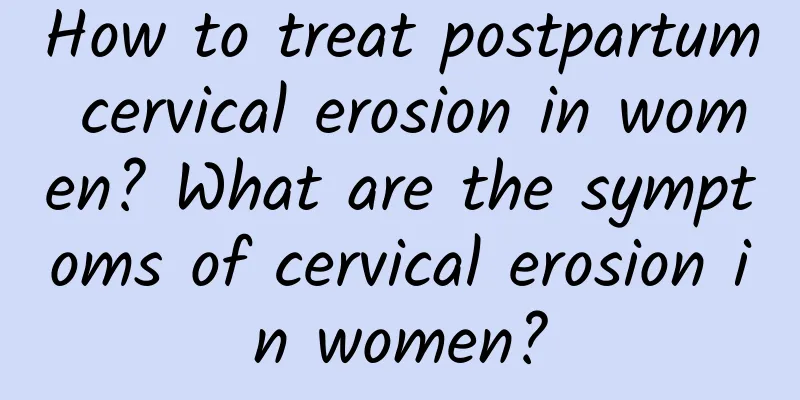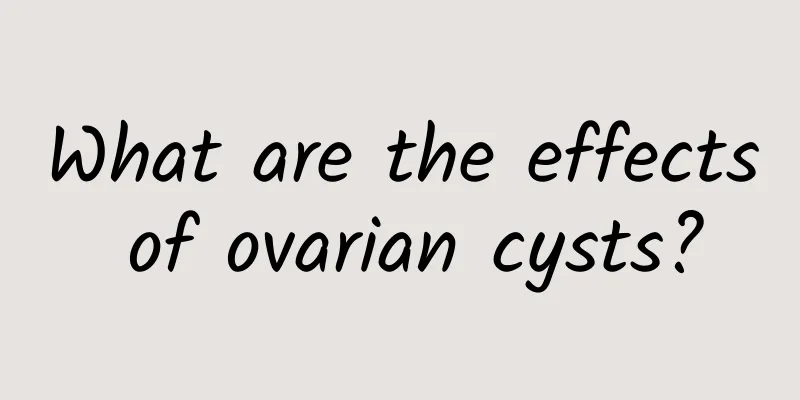How to treat postpartum cervical erosion in women? What are the symptoms of cervical erosion in women?

|
How to treat postpartum cervical erosion? Cervical erosion is actually a misunderstanding of the normal manifestation of the cervix in the past. Now it is replaced by the physiological phenomenon of "cervical columnar epithelium ectopia" in academia. Will postpartum cervical erosion get better on its own? Let's find out today. What is cervical erosion? There are two different types of cells in the cervix, the ones near the vagina are squamous cells, and the ones near the uterus are columnar cells. The two types of epithelial cells are different in appearance. The central part, which looks a bit like "eroded" cervix, is the appearance after being covered by columnar epithelium, while the relatively smooth outer part of the cervix is the part of the cervix covered by squamous epithelial cells. Before puberty, women's ovarian function is not perfect, estrogen is low, and the columnar epithelium is closer to the inside. After menstruation, the columnar epithelium is affected by estrogen and develops more to the outside. Therefore, more columnar epithelium similar to "erosion" is found during cervical examination. After menopause, women's estrogen levels drop, and the columnar epithelium begins to retreat to the inside. At this time, the "erosion" is no longer visible during examination. Therefore, in essence, the so-called cervical erosion is actually the eversion of the columnar epithelium. What are the symptoms of cervical erosion? Cervical columnar epithelial ectopia is a normal physiological phenomenon, and there is no special clinical manifestation. Some people may have contact bleeding, but this is just an individual difference in the cervix. If the leucorrhea increases, turns yellow, or has a strange smell, it is a manifestation of cervicitis, which is a symptom of infection on the cervix. Cervical cysts and hypertrophy are also the result of chronic cervical inflammation. Does cervical erosion need treatment? Cervical columnar epithelial ectopia does not require any treatment. Many current methods for treating cervical erosion are wrong. However, symptomatic cervicitis does need to be treated. Acute inflammation is treated with suppositories, and chronic inflammation can be treated with physical therapy such as laser or freezing. Will it develop into cancer if not treated? The occurrence of cervical cancer is related to infection with human papillomavirus (HpV). Some so-called high-risk types of HPV are prone to precancerous lesions and cervical cancer when they continue to infect the squamous-columnar junction of the cervix. Since the advent of cervical smears, the mortality rate of cervical cancer has dropped significantly. The key is early prevention and treatment. It is currently recommended that women over the age of 21 should undergo a cervical smear examination once a year. After the age of 30, an HPV examination can be combined. If the HPV and cervical smear tests are negative for three consecutive times, the interval can be extended to once every three years, and screening can be stopped after the age of 65. Does it affect fertility? Understanding that cervical erosion is a physiological phenomenon means that it will not affect fertility. |
>>: How to cure severe cervical erosion in women? Try these methods to cure severe cervical erosion
Recommend
What are the specific hazards of ovarian cysts?
Early onset ovarian cyst is a common disease. If ...
What is the best medicine for uterine effusion?
There are two types of uterine effusion: physiolo...
How to relieve vulvar itching
Vulvar itching is a very uncomfortable symptom th...
What happens if there is too much pelvic fluid?
Pelvic effusion is a very common gynecological di...
Causes of adnexitis in women
Adnexitis is one of the gynecological diseases. K...
New drug for the treatment of adenomyosis
There is no new medicine for adenomyosis. The mor...
Early treatment of cervical precancerous lesions
Generally speaking, the earlier cancer is discove...
How to cure COVID-19 obesity? Traditional Chinese Medicine: "clearing away heat and dampness" to expel fat waste from the body
It is easy to become obese due to lack of exercis...
What to pay attention to after ovarian cyst surgery
What should I pay attention to after ovarian cyst...
Does motherwort have the effect of inducing menstruation? Yes, it can.
Motherwort can promote menstruation. Motherwort i...
The main care measures for adnexitis in daily life
Among the many gynecological diseases, some are a...
What should I pay attention to after minimally invasive uterine fibroid surgery? How should I care after minimally invasive uterine fibroid surgery?
For patients with uterine fibroids, treatment sho...
What tests should be done for vulvar leukoplakia
Treatment without examination is unscientific and...
Skinny people get thin by sleeping! These 5 tips will make you lose weight the more you sleep
Losing weight is so hard, it would be great if yo...
Pelvic inflammatory disease usually causes pain in three places
Pelvic inflammatory disease is a common inflammat...









